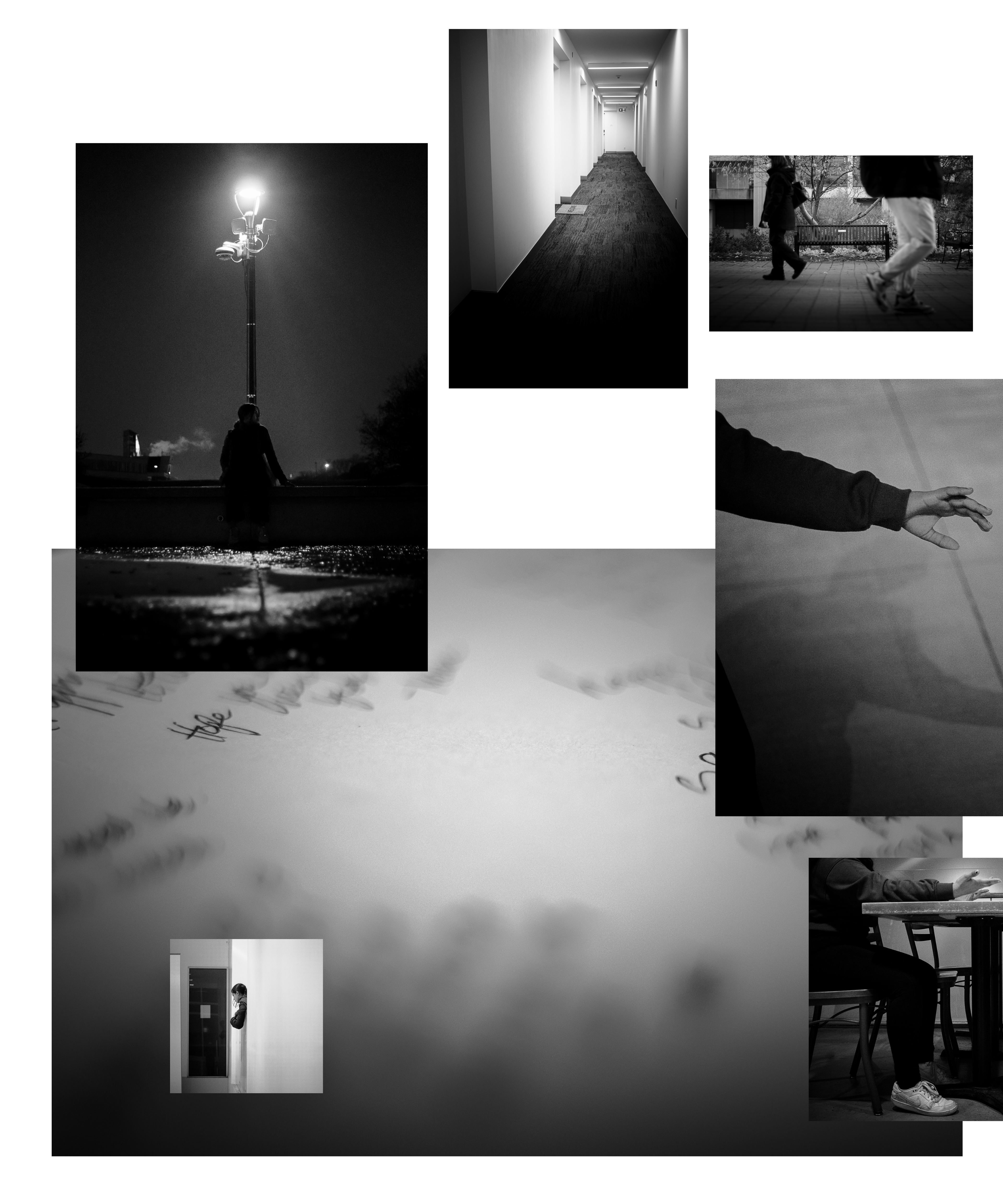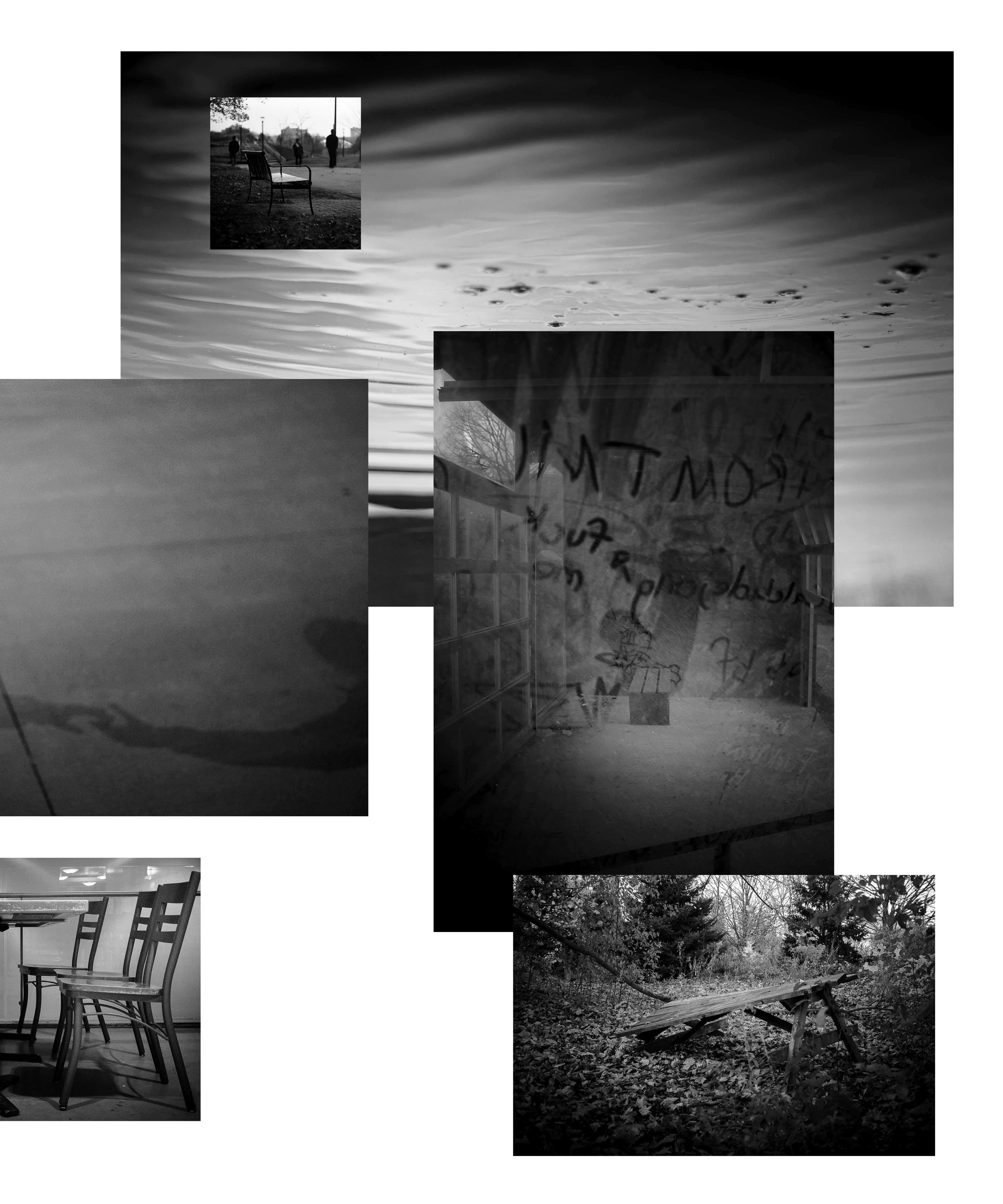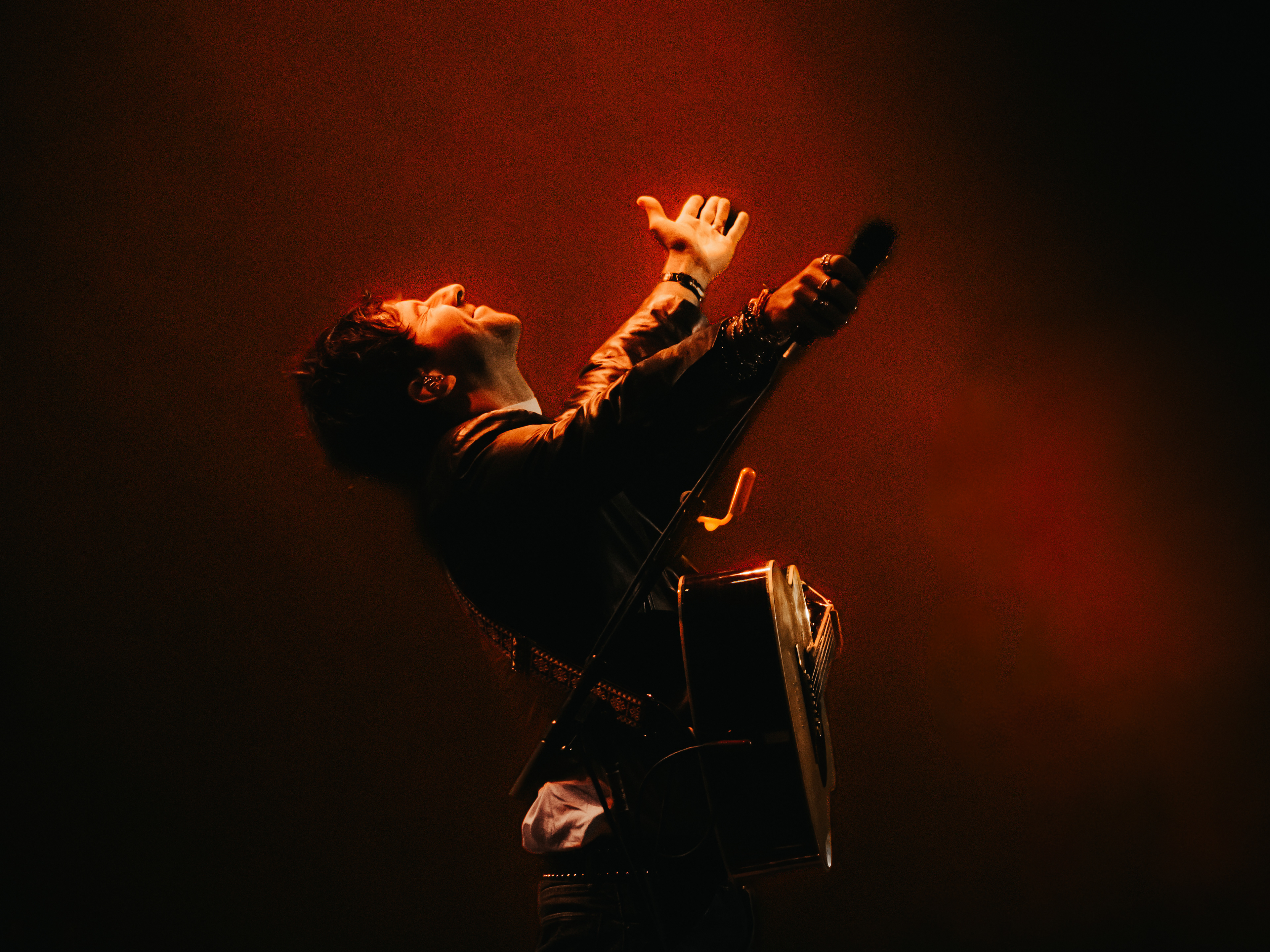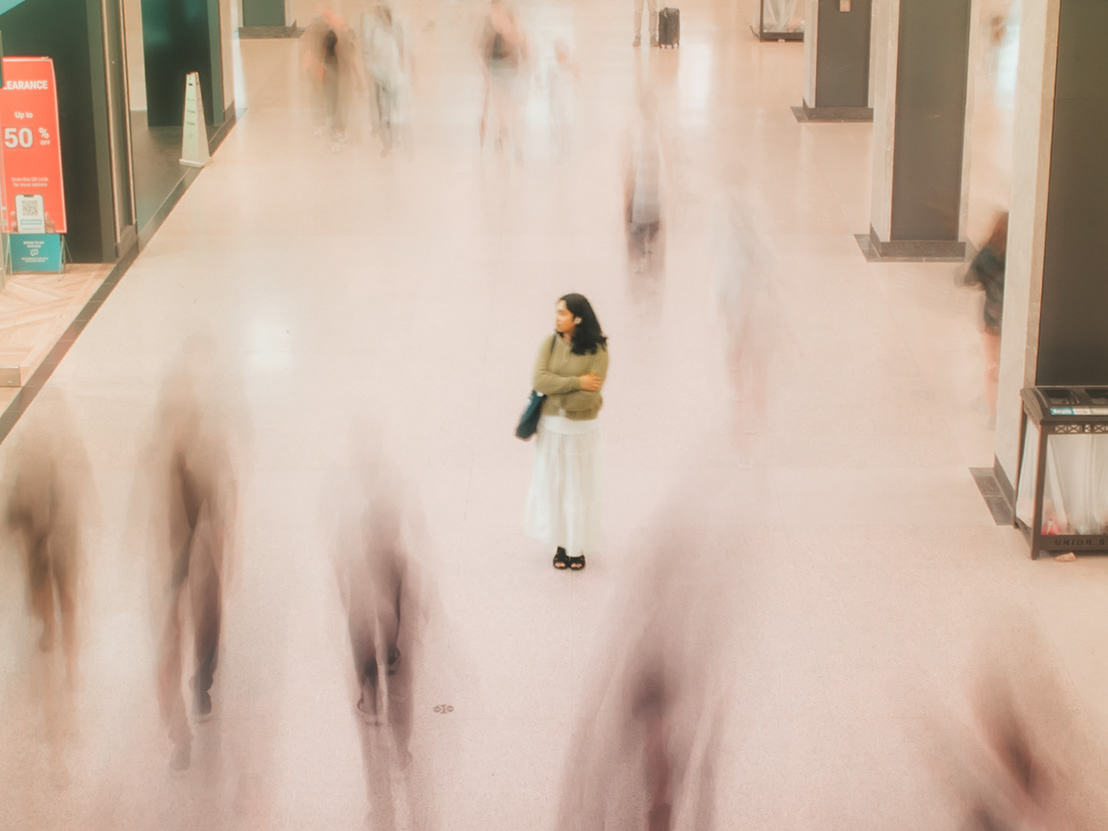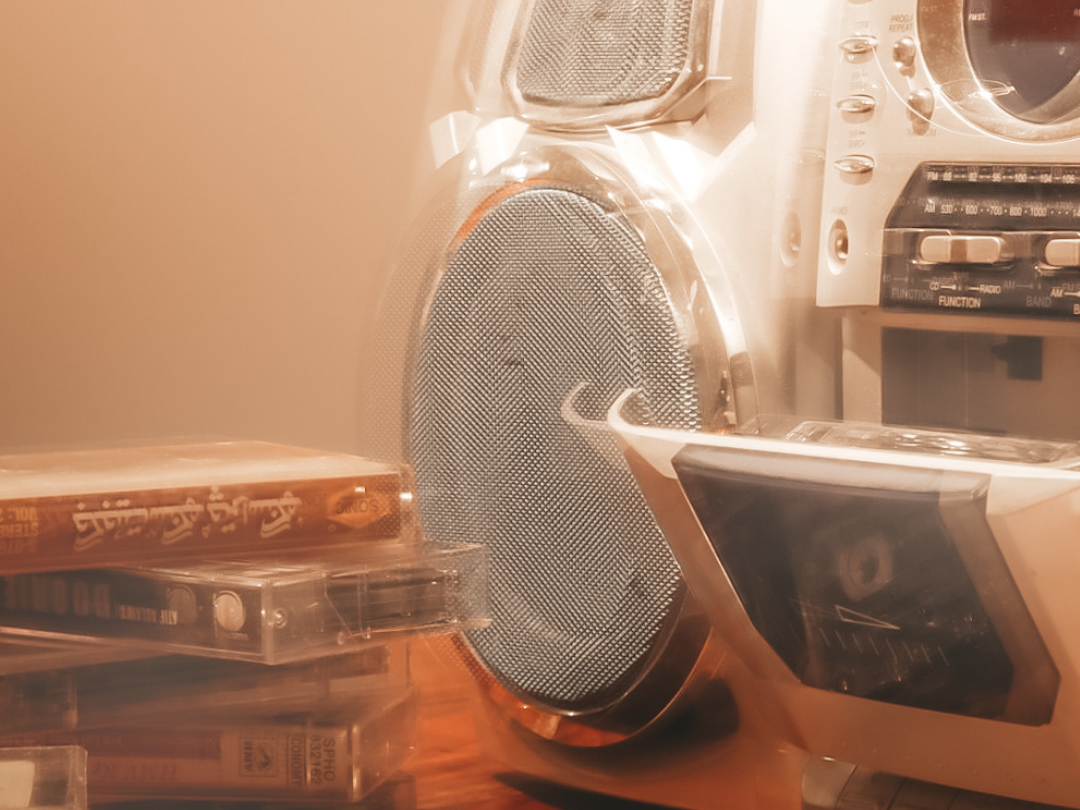The title of this piece is “Reaching for a Memory”. My approach for this project was to combine two prints into one large one, whilst allowing each print to also be impactful as a stand alone. This was inspired by taking a literal meaning to the given prompt: parts of a whole. The piece is about the overall emotion of grief—whether that be a death, a fallout, a breakup, or something else of the similar vein—and specifically explores two sub-emotions, emptiness and absence, by how they intertwine and create such a complex feeling. The left side of the piece (the first print) showcases the feeling of emptiness. From leaving out welcome mats to invite people who no longer visit, to leaving blank spaces on birthday cards for people who no longer write, the left canvas is tackling the desperate yearning/wanting for someone to be present when they no longer are or can’t be. The right side of the piece (the second print) showcases the feeling of absence. From abandoned benches to ripples of water in a pond, the right canvas is tackling the reality of someone’s disappearance; the traces and remnants of a person that would be there, but they no longer are or can’t be. To tie these two prints (and feelings) together, two photos branch beyond the canvas and onto each others’ respective space. The human hand on the left print reaches out to the right print, only to be met by a shadow hand on the other side. The person on the left print speaks to the right print, only to be met by empty chairs on the other side. These photos are intentionally split in half to further enhance the emotion each side is exploring, and the way they interact together to exhibit grief.
A photo-based artist I referenced during the production of my piece was Louie Palu. Taking direct inspiration from his work, Cage Call¸ I utilized his techniques in creating black-and-white photographs with appealing composition and striking contrast. During my photoshoots, I switched between a 24 mm and 50 mm prime lens to bring about both a ‘documentarian’ style (as seen in the ‘doormat’ and ‘abandoned picnic table’ photo) and ‘noticing’ style (as seen in the ‘letter’ and the ‘bench’ photo) to the piece. Having a very shallow depth-of-field was also key in properly exploring the themes. In post-production, I intentionally darkened the shadows and boosted the highlights, and added subtle vignettes around the image to help single out the subject I was focusing on in each photo.
Altogether, The technical and aesthetic decisions I made in the production, post-production, and presentation stages all contribute to fully exploring the concept of grief. Making every photo black-and-white, editing them to stand out, and arranging them so intricately are all done intentionally to exhibit the feelings of emptiness, absence, and grief.
